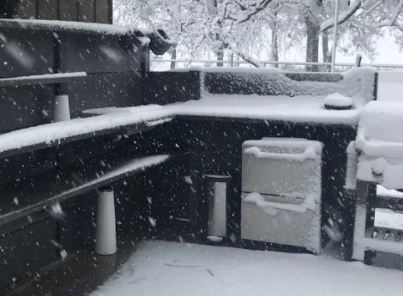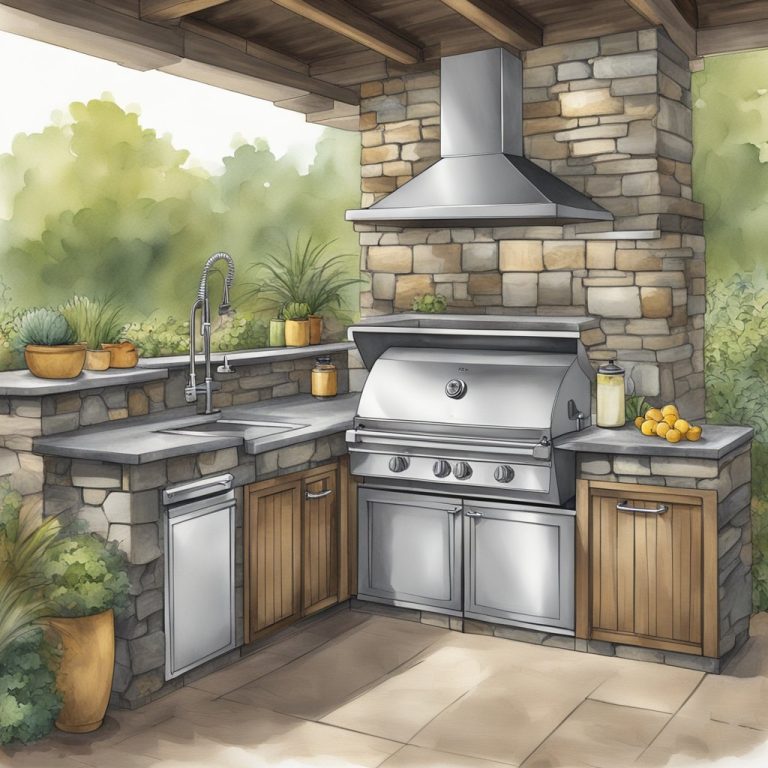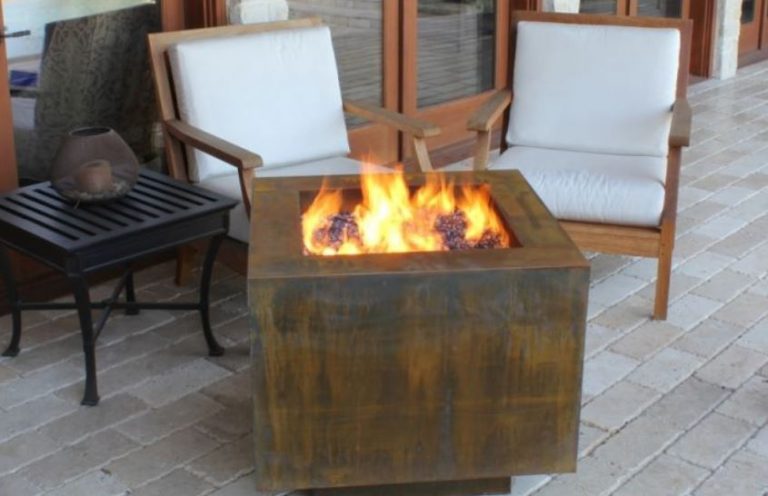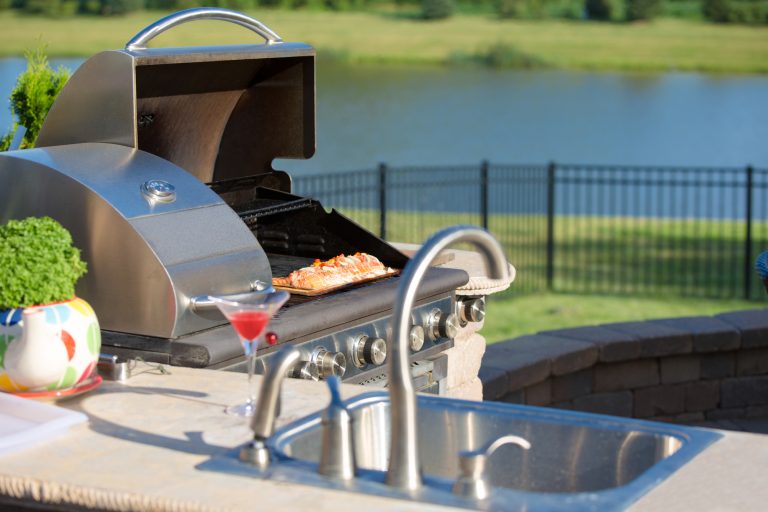Winterizing Your Outdoor Refrigerator
Winterizing an Outdoor Refrigerator
As the leaves change color and the weather cools, we’re reminded to get ready for the changes ahead. Whether you’re ahead of the curve and have already started preparing your home for the winter months or you’re just getting started, Fall is the best time to get your outdoor kitchen ready for the colder season ahead.
You’ve put in a lot of effort to customize your kitchen, so it’s critical to devote the time and effort necessary to protect your outdoor appliances throughout the harsher winter months. Preparing your outdoor kitchen for the coming winter weather will help its components serve you for many years to come.
Why Winterize Outdoor Refrigeration Appliances?
Failure to winterize your refrigerator can result in costly damages down the road, so understanding how to prepare your outdoor appliances is crucial.
You risk having broken water pipes and appliance damage if you don’t winterize your outdoor kitchen.
When is a Good Time to Winterize an Outdoor Refrigerator?
When outside temperatures fall below 40 degrees Fahrenheit and are forecast to stay at or below that temperature for the season, it is time to shut your outdoor fridge down until Spring.
An outdoor fridge will continue to operate regularly until the outside temperature approaches that of the refrigerator and freezer. The refrigerator will not cool and the thermostat will not turn on at that point. Your food and beverages will stay cold if this happens, but the refrigerator will be unable to manage the temperature of your food. If the temperature drops below 40 degrees F, some fridge contents, such as beverages, may spoil.
When the outside temperature drops below freezing, the attached freezer may shut down. Although many refrigeration outdoor appliances feature a freezer, both portions are controlled by the same thermostat. Because this thermostat is positioned in the refrigerator area, it does not turn on when the outside temperature falls below that of the refrigerator, and the freezer does not cool. Place a separate thermometer among the food to test the freezer function; it should read 0 degrees Fahrenheit.
What Parts of an Outdoor Fridge Need Winterizing?
The inside compartments of an outdoor refrigerator should be thoroughly clean, but they need no other special care.
The outside of the fridge should be protected from hail and ice, but not completely covered to protect from mold. Applying a stainless steel polish will help the exterior housing weather the elements.
Outdoor fridges are made with extra sturdy materials and the electrical components are encased to prevent nesting. These precautions will help protect the fridge throughout the winter season.
How to Winterize Your Outdoor Fridges
To winterize an outdoor refrigerator, freezer unit follow these steps:
- Turn off the device and unplug it. Remove all the food items from the fridge and freezer compartments. You can wrap up the cords in a sturdy plastic bag so rodents aren’t tempted to chew on the cords.
- Allow the unit to acclimate to the outside temperature by leaving the doors open.
- Wash the inside compartments with a baking soda and water solution to clean the interior. You can also use vinegar and water to wipe down the walls and shelves.
- Clean the refrigerator completely with mild soap and water. Remove the front grill (the toe plate) and vacuum underneath it to remove loose dirt and debris. After you’ve cleaned underneath the refrigerator, put the front grill back on.
- Leave the refrigerator open to dry it completely so mold doesn’t form on the inside. A box of baking soda will help get rid of any odors inside the fridge over the winter.
- Close (and lock if there is a lock) the doors. You can also leave the doors open by propping them open. Make sure that the door will remain open and not accidentally trap debris or animals inside.
- If your outdoor fridge has removable panels, remove them and vacuum behind them to get rid of any dirt or debris that has built up there. You can clean your refrigerator cabinet the same way you clean the outside of grill cabinets before shutting down for the winter.
Outdoor Fridge with Ice Maker
For units with an ice maker or stand-alone ice makers, the water supply lines from the water valve to the ice maker must be unplugged, drained, and then reconnected. This empties the majority of the remaining water in the pipe, preventing it from freezing and causing damage.
If the unit is left on, turning off the water and draining the water line will not be sufficient, as this may not drain all of the water from the unit, causing it to freeze and cause damage.
The ice maker and water line should not be winterized with antifreeze.
Replace the water filter when the equipment is placed back into use (if necessary).
Getting Your Winterized Refrigerator Back into Service in the Spring
When the weather has turned warm, you can re-start your outdoor refrigerator and other outdoor kitchen appliances.
It is advised that an outdoor refrigerator be restarted in an area with an ambient temperature of 44 to 90F (7 to 32C). The performance of the unit may be compromised if the ambient temperature is above or below the prescribed temperatures. If you place your device under extremely cold or hot conditions, for example, the internal temperature may change. It’s possible that the operational temperature range won’t be attained.
Make sure you clean the inside of the refrigerator again with a mild solution as you did in the Fall. (You should also clean the other outside kitchen appliances at this time.)
Once again, remove the vent and vacuum under the refrigerator to remove dead leaves and any other debris that might have accumulated over the winter.
Give the outside of the refrigerator a good cleaning with mild soap and water or a stainless steel cleaner.
Reattach the water supply lines (if necessary).
Plug the fridge back and and allow it to reach your chosen temperature before adding any foods and drinks to the interior compartments.
At this point you might ask
what if I don’t want to bother to winterize my outdoor fridge?
It depends on how cold it gets and how long it stays below freezing. Outdoor refrigerators do not have a heating mechanism.
However, they are all highly insulated.
If the temperature is just below freezing and the refrigerator is not opened, it may take a long time to freeze, but given enough time, the temperature will finally equilibrate.
If the temperature drops below freezing, the fridge will ice over in a matter of minutes to hours, depending on how cold it is.







